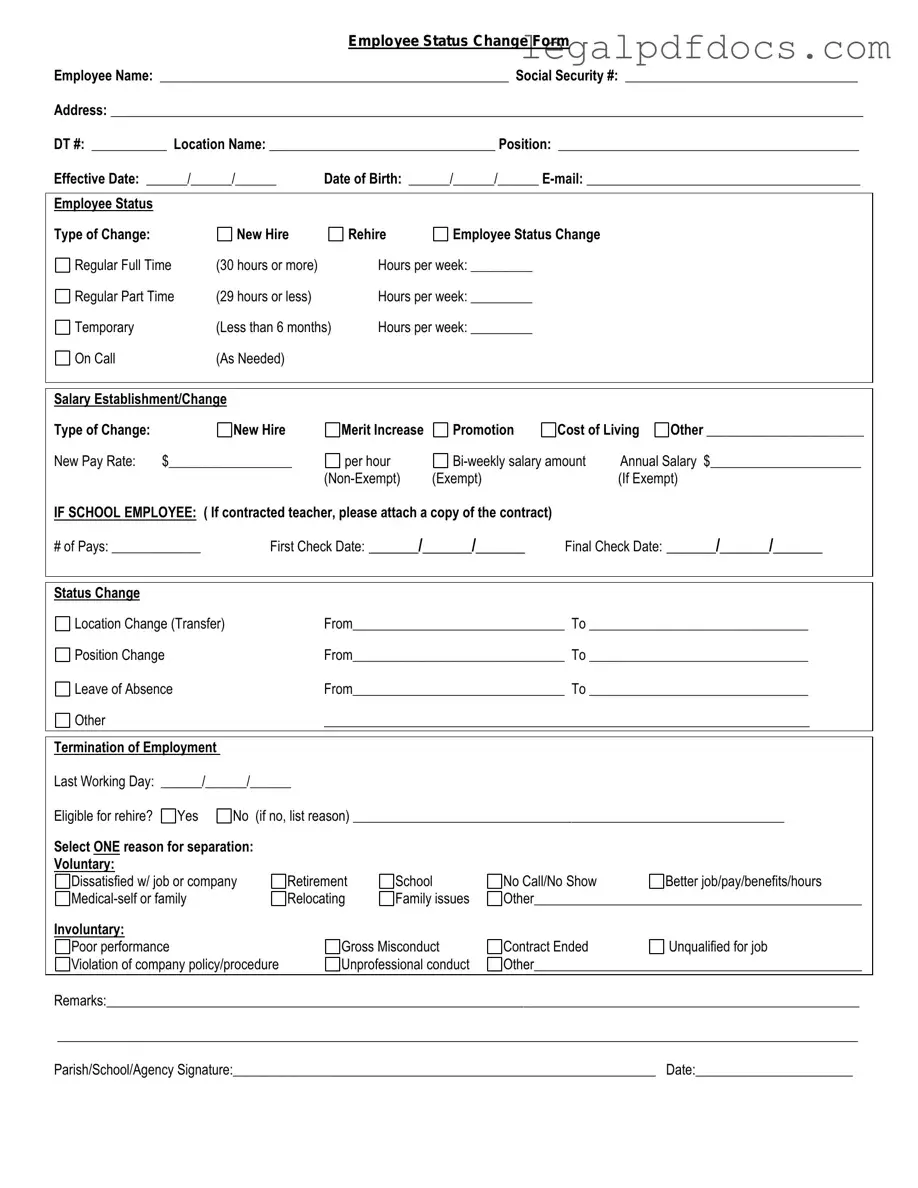Fill Out a Valid Employee Status Change Template
The Employee Status Change form is a crucial document used by organizations to officially record changes in an employee's status, such as promotions, transfers, or terminations. This form ensures that all relevant departments are informed and can update their records accordingly. To ensure a smooth transition, it is important to fill out the form accurately and promptly; click the button below to get started.
Open Employee Status Change Editor Here
